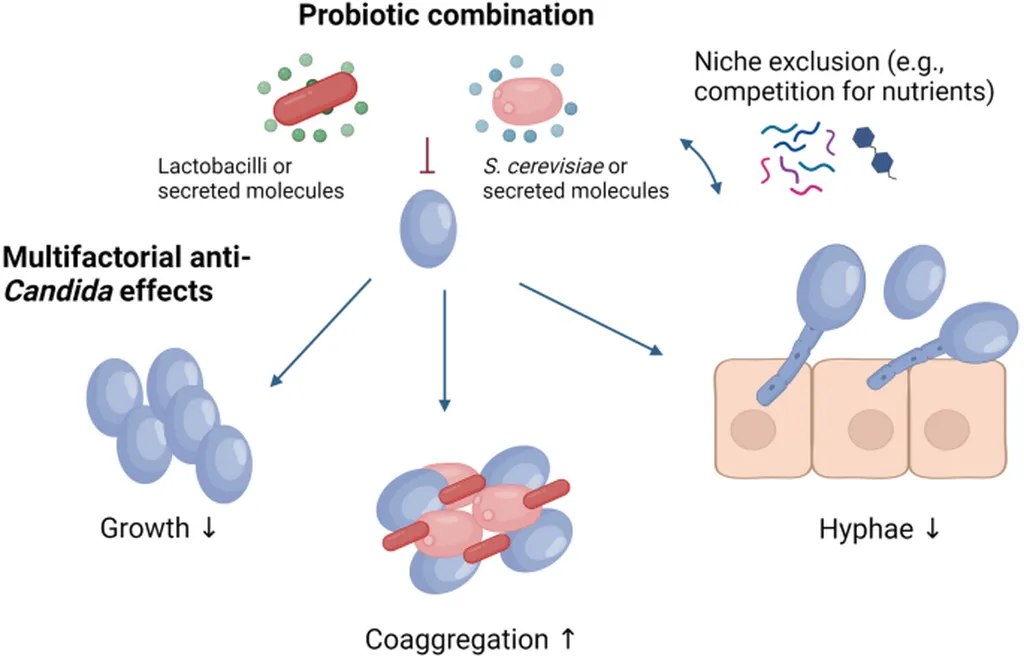In the intricate world of microbial interactions, a new review published in *Biofilm* sheds light on the dynamic relationship between Lactobacillaceae and Saccharomyces species, offering insights that could revolutionize the agriculture and food industries. Led by Zhenbo Xu from the Department of Laboratory Medicine at The Second Affiliated Hospital of Shantou University Medical College, the research delves into the polymicrobial interactions and biofilm formation between these two microbial groups, highlighting their potential to enhance fermentation processes and product quality.
Lactobacillaceae, known for their metabolic versatility, are ubiquitous in nutrient-rich environments such as fermented foods, vegetables, and the gastrointestinal tracts of animals. They produce lactic acid and bioactive compounds, exhibiting anti-inflammatory, antibacterial, and antifungal properties. Saccharomyces yeasts, on the other hand, are widely used in food, medicine, and biofuel industries, with some species like *S. boulardii* recognized for their probiotic benefits.
The review emphasizes the synergistic roles of these microbes in improving fermentation efficiency and microbial stability. “The interactions between Lactobacillaceae and Saccharomyces species are complex and multifaceted,” notes Xu. “They involve biofilm formation, metabolic exchange, and nutrient sharing, which can significantly enhance the quality and stability of fermented products.”
One of the key findings is the competitive interactions observed in certain systems, such as sugarcane fermentation. This underscores the need for precise microbial management strategies to optimize industrial applications. The research suggests that understanding these interactions can lead to more efficient and sustainable fermentation processes, benefiting the agriculture sector.
The commercial impacts of this research are substantial. By leveraging the synergistic relationships between Lactobacillaceae and Saccharomyces, industries can improve the quality and consistency of fermented products, reduce production costs, and enhance microbial stability. This could lead to more efficient biofuel production, better probiotic formulations, and improved food preservation techniques.
As the agriculture sector continues to evolve, the insights from this review could shape future developments in metabolic engineering and microbial management. “The potential applications are vast,” says Xu. “From enhancing fermentation efficiency to developing new probiotic formulations, the possibilities are endless.”
The research also identifies existing knowledge gaps and future directions for optimizing industrial applications. By synthesizing current research, the review aims to provide a comprehensive understanding of how microbial interactions influence fermentation outcomes, paving the way for innovative solutions in the agriculture and food industries.
Published in *Biofilm* and led by Zhenbo Xu from the Department of Laboratory Medicine at The Second Affiliated Hospital of Shantou University Medical College, this review offers a thought-provoking exploration of the complex world of microbial interactions. As the agriculture sector looks to the future, the insights from this research could be instrumental in driving innovation and sustainability.

